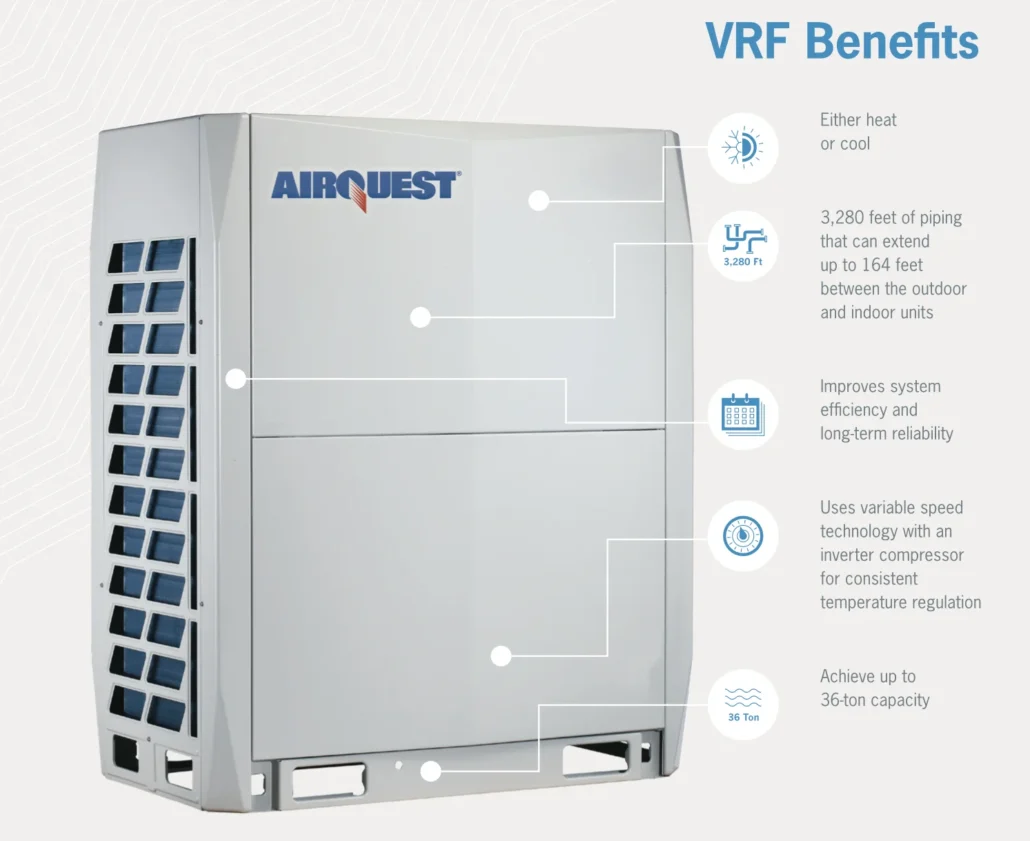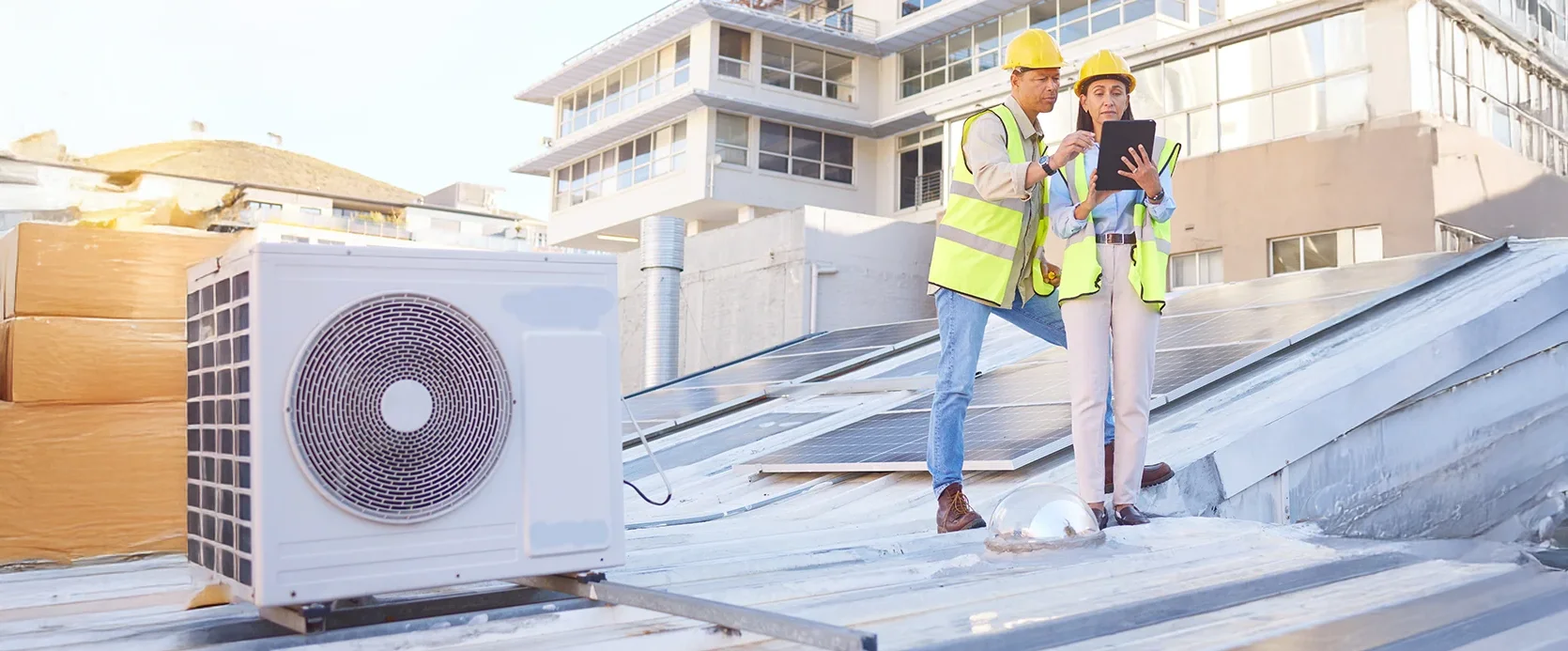The Future of Flexible HVAC Solutions.
In today’s energy-conscious world, HVAC professionals are turning to smarter systems that offer both performance and precision. Enter Variable Refrigerant Flow (VRF) — a total HVAC solution known for its efficiency, flexibility, and zone-by-zone comfort control.
Whether you’re designing a complex commercial building or retrofitting a hotel, VRF systems are setting the standard for how we heat and cool spaces.
🔍 What Is a VRF System?
Variable Refrigerant Flow (VRF) is a sophisticated HVAC technology that delivers heating and cooling using refrigerant as the sole medium. It’s a multi-split system that can connect up to 64 indoor units to a single outdoor unit.
What sets VRF apart is its ability to modulate the exact amount of refrigerant each indoor unit needs — adapting automatically to the space’s load. This ensures maximum comfort without over-cooling or wasting energy.
⚙️ How Does It Work?
The secret lies in its inverter-driven compressors. These compressors vary speed based on demand by adjusting power frequency. As a result:
- The system avoids constantly cycling on/off
- It delivers only the necessary refrigerant
- It ensures smoother operation, better efficiency, and extended equipment life

🔄 Two Main Types of VRF Systems
1. Heat Pump VRF
- Can heat or cool, but not both at the same time
- Ideal for spaces where only one mode is needed, like:
- Banks
- Open office layouts
2. Heat Recovery VRF
- Can heat and cool simultaneously
- Transfers heat from one zone to another for added efficiency
- Perfect for buildings with varying comfort needs, such as:
- Hotels
- Senior living facilities
- Hospitals
- Schools
✅ Why Choose VRF?
VRF isn’t just a collection of components — it’s a closed-loop system designed to work together seamlessly from day one. This integrated approach brings a long list of benefits:
✔️ Key Advantages:
- Energy efficiency: Only uses what’s needed, when it’s needed
- Zoned control: Independent comfort per room or space
- Quiet operation: Inverter technology reduces noise
- Space-saving design: Slim, modular units for indoor and outdoor
- Scalability: Connect up to 64 indoor units to one outdoor system
- Flexibility: Suited for commercial, multi-family, retail, and institutional buildings
💡 When to Use VRF Systems?
VRF is ideal for:
- Projects requiring high zoning flexibility
- Energy-conscious building designs
- Renovations where ductwork isn’t practical
- Businesses looking for long-term operating cost savings
🛠️ Final Thoughts: A Total HVAC Solution
Unlike traditional systems that piece together separate parts, VRF is a total solution. It’s designed for reliability, scalability, and efficiency — all while delivering premium comfort control.
Whether you’re planning a large-scale commercial development or upgrading a single location, VRF systems offer a smart investment in the future of HVAC performance.





